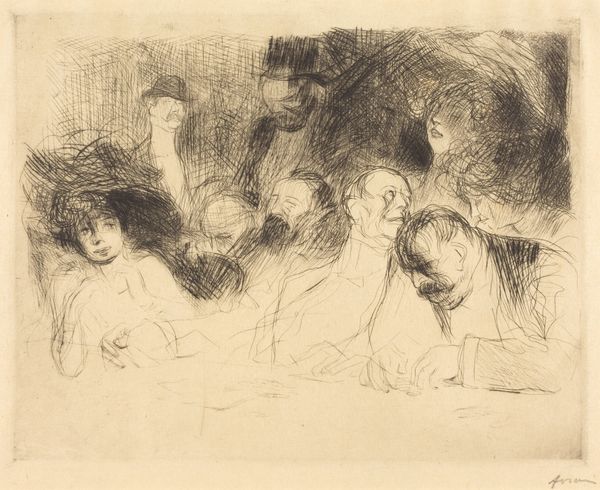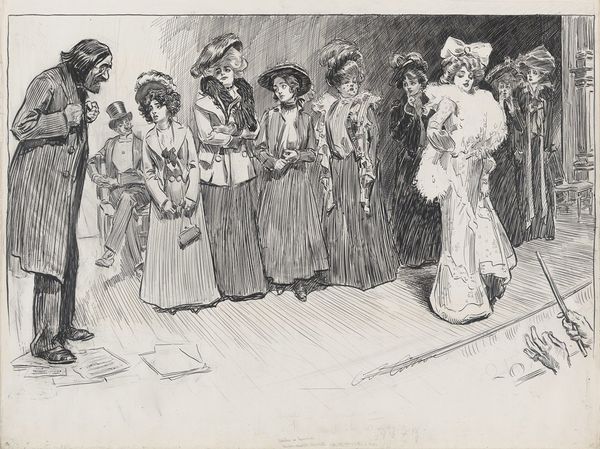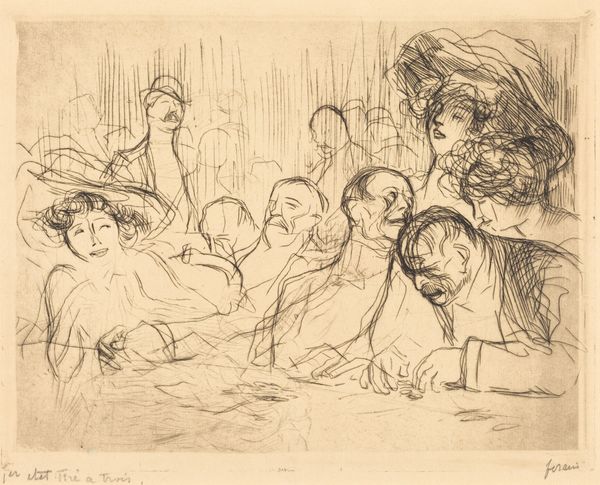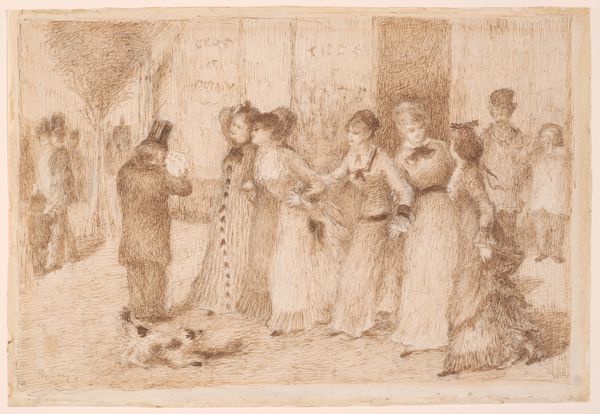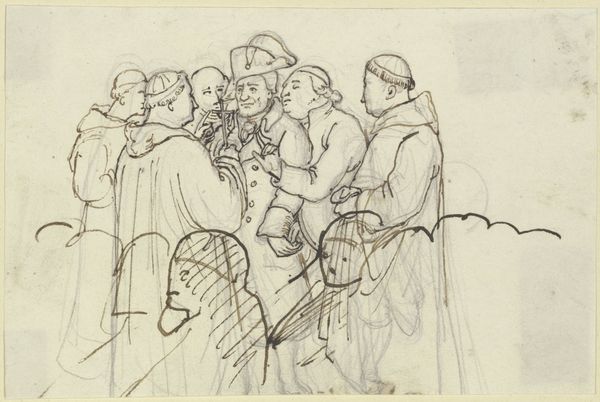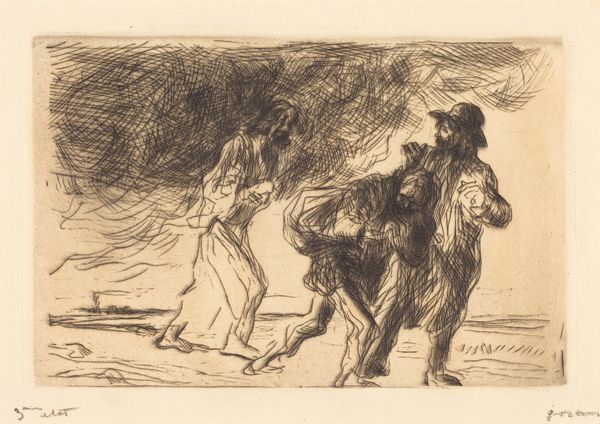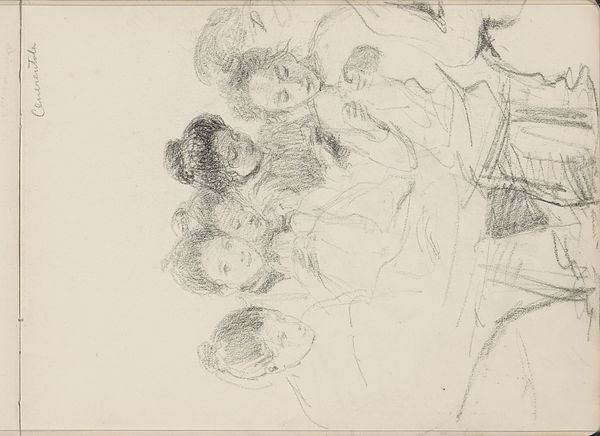
drawing, pencil
#
pencil drawn
#
drawing
#
charcoal drawing
#
figuration
#
pencil drawing
#
sketch
#
group-portraits
#
pencil
#
symbolism
#
genre-painting
Copyright: Public domain
Curator: Steinlen’s drawing, "La Sortie Des Ouvrieres," depicts a group of women leaving work. What strikes you first about it? Editor: The overwhelming sense of…weariness. Look at how the lines sag and droop. It's all charcoal dust and exhaustion. I want to know about the type of paper used, too. You know, to withstand such intense strokes. Curator: The Symbolist movement of that period held great interest in portraying the psychological states of individuals and communities, with a growing middle class in Europe and these representations certainly invite the viewer to consider the unspoken emotions and experiences. What meanings do these women, exiting from what you called charcoal dust and exhaustion hold? Editor: Right. And the social conditions. I see repetitive labor made visible through the very process of the drawing. The artist repeats lines and gestures, much like the workers' routines. You can almost feel the labor being embedded into the paper. Curator: Indeed, one can delve into these female figures as a sign for "Labor" itself, its conditions, the social structures related to a particular historical time, but there is more at play than merely representing "workers." Consider the light: it softens the harsh reality of their material conditions, lending an almost ethereal quality to their collective form. They could be symbolic bearers of new world! Editor: Well, consider that Symbolist "ethereal quality" to be an aesthetic effect! It runs the risk of obscuring the realities these women would face day-to-day. I bet that light wasn’t so generous back at their jobs, under exploitative bosses. Curator: Perhaps. But to the contemporary viewer, their clothes might signify not only labor but a loss of traditional identities. Their gaze ahead suggesting social change on a broader scale. Editor: Hmm, there's definitely tension between representing the *idea* of labor, versus showing labor's raw physicality and socio-economic place in society. I guess that tension makes for a more interesting image. Curator: Exactly! An invitation for considering how material realities interplay with aspirations and cultural memory. Editor: Agreed, now I wonder who the patron was? Curator: The very question is how we started understanding a society based on the production...
Comments
No comments
Be the first to comment and join the conversation on the ultimate creative platform.
